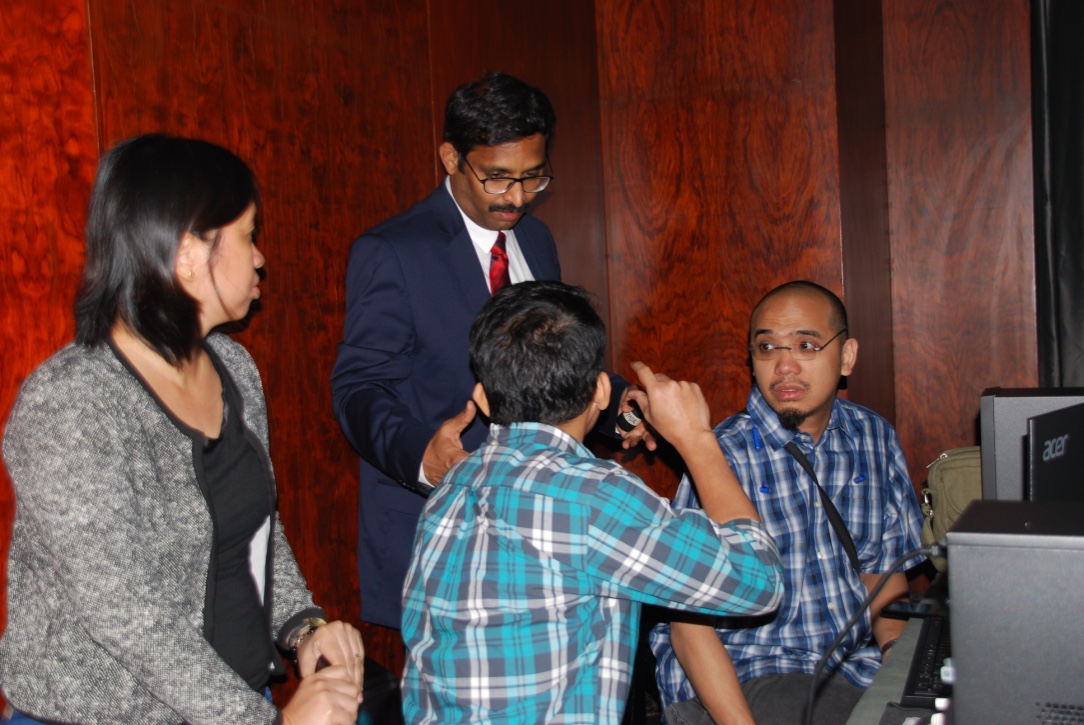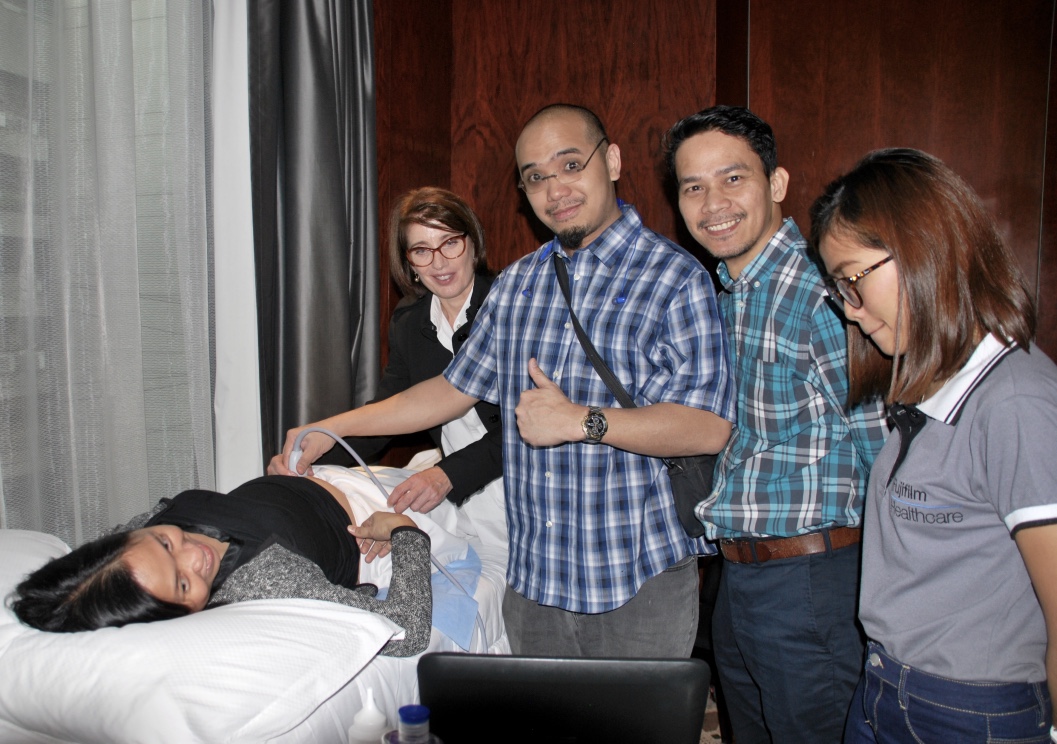April 30, 2018
The 12th Annual Convention of the Philippine Radiation Oncology Society entitled “Novel Radiotherapy Techniques: Improving Cancer Outcomes Through Image Guidance” was held last April 26-28, 2018 at the Makati Diamond Residences.
It started with a Pre Congress Image-Guided Brachytherapy (IGBT) Workshop on Gynecologic Cancers. Dr. Corazon Preciosa Pabroa, Chief of Nuclear Services Division, delivered the welcome remarks as representative of the Philippine Nuclear Research Institute. A total of 73 participants composed of 18 brachytherapy teams from different hospitals including five local speakers and six members of the organizing committee participated during the workshop. The whole country was well-represented with eight (8) Manila-based training hospitals, six (6) government hospitals from Luzon and Mindanao and four (4) private medical centers from Luzon and Visayas which were either IGBT-capable or at least IGBT-ready. The program had teaching lectures from all three international experts, namely Drs. Umesh Mahantshetty, Daniel Berger and Sylvia van Dyk in the morning followed by interactive case discussions and workshop in the afternoon. There were two cases presented by the two pioneer institutions in IGBT implementation, namely Jose R. Reyes Memorial Medical Center and St. Luke’s Medical Center on hybrid technique and standard Fletcher-Suit application, respectively, with interactive discussions between the presenters and experts including some members from the audience. Then the participants were divided into three groups for the workshop with six hospital teams per station for 45 minutes each consisting of transabdominal ultrasound demo with Dr. van Dyk, applicator reconstruction and optimization with Dr. Berger and contouring with Dr. Mahantshetty. Both contouring and planning rooms had six (6) TPS workstations each, while the imaging room had five (5) ultrasound machines for all participants to have hands-on experience. Then the entire delegation convened back to the lecture hall for recapitulation and summary led by Drs. Mahantshetty and Berger as a joint-teaching presentation
The convention proper had a total of 222 participants: 117 radiation oncologists, 52 medical physicists, 45 radiologic technologists and seven (7) nurses including one (1) clinical oncologist from Malaysia.
Day 1 focused on image-guided brachytherapy (IGBT) for cancer of the uterine cervix. The opening lecture was given by a local speaker, Dr. Warren Bacorro, who had IGBT training under Dr. Umesh Mahantshetty himself in Tata Memorial Hospital. This was immediately followed by a line-up of lectures by the three international experts, namely Drs. Umesh Mahantshetty, Daniel Berger and Sylvia van Dyk focusing on the theoretical aspect of image-guided brachytherapy in gynecologic cancer from introduction of ICRU 89 concepts, basic principles of physics and imaging especially with the aid of an ultrasound. Another local speaker, Dr. Anna Maria Fineza-Dela Cruz, discussed briefly image-based dose-volume assessment using DVH parameters. EMBRACE studies were then presented thereafter by Dr. Umesh Mahantshetty and Dr. Daniel Berger on clinical outcomes and physics/QA, respectively. The third and last local speaker, Dr. Bianca Nikkola Olonan, talked about nodal boost in combination of external beam and image-guided brachytherapy. For the final lecture by the experts, Drs. Mahantshetty and Berger had a joint-teaching presentation once again wherein they both discussed points on how to shift from Point A to image-guided brachytherapy. Dr. Mahantshetty emphasized the importance of having a plain axial T2W pelvic MRI at the least just prior to first fraction of brachytherapy, while Dr. Berger showed real-time optimization using standard dosing initially. The activity for the first day was ended with a case presentation from the University of Santo Tomas Hospital which further encouraged interactive discussions.
Day 2 covered a general topic on stereotactic body radiotherapy (SBRT) on various anatomical sites such as lung, liver and prostate. The basic principles on radiobiology and physics were discussed by Dr. Caissa Elvira Abao and Ms. Kathleen Jane Cortez, respectively. Dr. Angela Gaerlan shared her experience on clinical implementation of lung SBRT from her recent training at Peter MacCallum Cancer Center in Melbourne, Australia. Dr. Youquan Li of National Cancer Centre in Singapore gave a follow up lecture focusing on challenges in doing such a technique. Dr. Mario Paulis Cesar Sarmiento, on the other hand, presented the European and American Guidelines on SBRT for Early-Stage Lung Cancer. The next set of speakers tackled issues on liver cancer. Dr. Renato Santos-Ocampo shared his experience on hepatic conditions as an interventional radiologist which included both primary tumor and metastatic lesions. Dr. Jinsil Seong of Yonsei University in Seoul, South Korea rendered a very comprehensive lecture on liver SBRT and her team’s local experience in managing such a malignancy in a country where it is common. The last segment covered topics on prostate cancer. Dr. John Mark Carabeo presented moderate hypofractionation for early cancers, while Dr. Frances Lily Penano discussed interstitial brachytherapy technique.
Finally, the three-day scientific program ended with demonstrations on the latest SBRT technologies which were either LINAC- or robotic-based.






